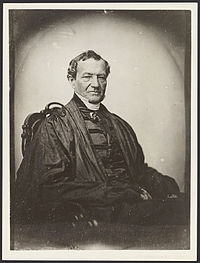Post Author: Bill Pratt
If there is one thing I have heard dozens of times from skeptics, it is that eyewitness testimony cannot be trusted. Skeptics constantly point this out to me. Why? Because this is the the best way, in their estimation, to discredit the eyewitness accounts of Jesus’s life recorded in the New Testament.
My response has always been, from common sense, that some eyewitness testimony is better than other eyewitness testimony. One cannot sweep aside all of it, as we rely on this kind of testimony every day of our lives. We literally could not function if we did not believe anything that other people told us about what they witnessed.
Many skeptics, however, don’t go so far as to impugn all eyewitness testimony from ancient history. Their problem with the NT accounts of Jesus’s life is the apparent inconsistencies and divergences among the sources. One Gospel says that two angels were at Jesus’s tomb and another Gospel says that one angel was at Jesus’s tomb. Based on these kinds of discrepancies, skeptics claim that all, or nearly all, of the testimony in the NT should be thrown out.
Is this position reasonable? Do discrepancies rule out the reliability of testimony? Recently I ran across some actual legal language about eyewitness testimony which applies to court proceedings in the state of California. This language was cited by J. Warner Wallace in his book Cold-Case Christianity: A Homicide Detective Investigates the Claims of the Gospels. Here it is:
Do not automatically reject testimony just because of inconsistencies or conflicts. Consider whether the differences are important or not. People sometimes honestly forget things or make mistakes about what they remember. Also, two people may witness the same event yet see or hear it differently. (Section 105, Judicial Council of California Criminal Jury Instructions, 2006).
According to Wallace, “Jurors are instructed to be cautious not to automatically disqualify a witness just because some part of his or her statement may disagree with an additional piece of evidence or testimony.”
Skeptics, then, are being unreasonable when they demand that there be no apparent inconsistencies within the Gospel accounts. This standard is not ever applied in California law courts (and I suspect courts in other states), where matters of life and death are decided. What a reasonable person should do, when reading the Gospels, is set aside the apparent discrepancies and look at the areas where the witnesses agree.
 Agnostic New Testament scholar Bart Ehrman wrote in his book, Misquoting Jesus, that his Christian beliefs began to fall apart when he realized that there was a mistake, an error, in the Gospel of Mark. Now,
Agnostic New Testament scholar Bart Ehrman wrote in his book, Misquoting Jesus, that his Christian beliefs began to fall apart when he realized that there was a mistake, an error, in the Gospel of Mark. Now, 